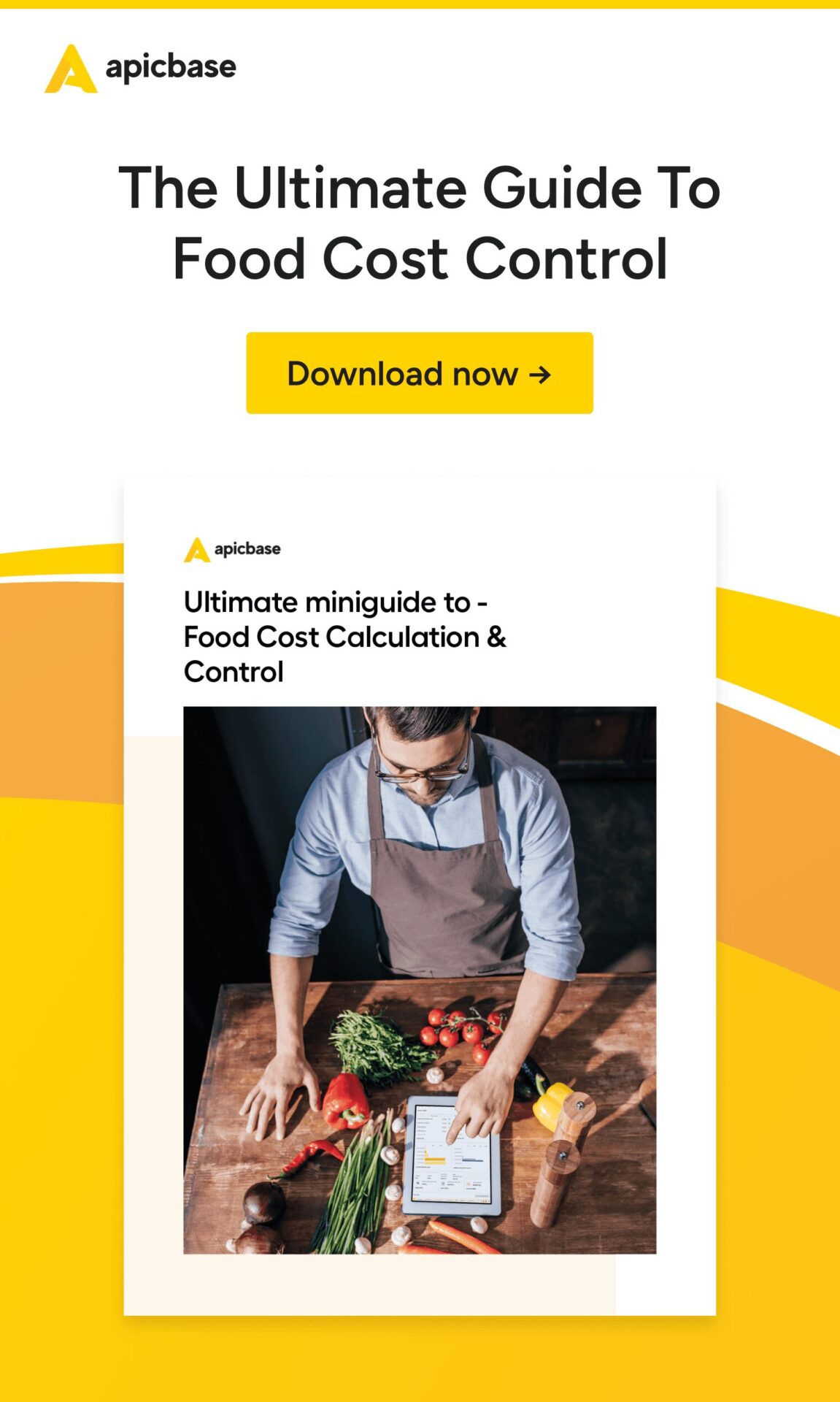On average, a restaurant’s food costs amount to around a third of total revenue. With ingredient costs fluctuating constantly, controlling spending is one of the toughest challenges facing operators.
To maintain your reputation and serve the quality food your customers expect, you need to find ways to reduce costs without sacrificing food quality.
The good news is that a relatively small reduction in spending can substantially boost your profit margins and total profitability. And this effect is compounded further when you’re able to reduce costs across multiple locations.
In this article, we’ll break down the types of food costs and the essential food cost calculations you need to know. Then, we’ll discuss seven ways to reduce food costs without compromising quality.
What are the two types of food costs?
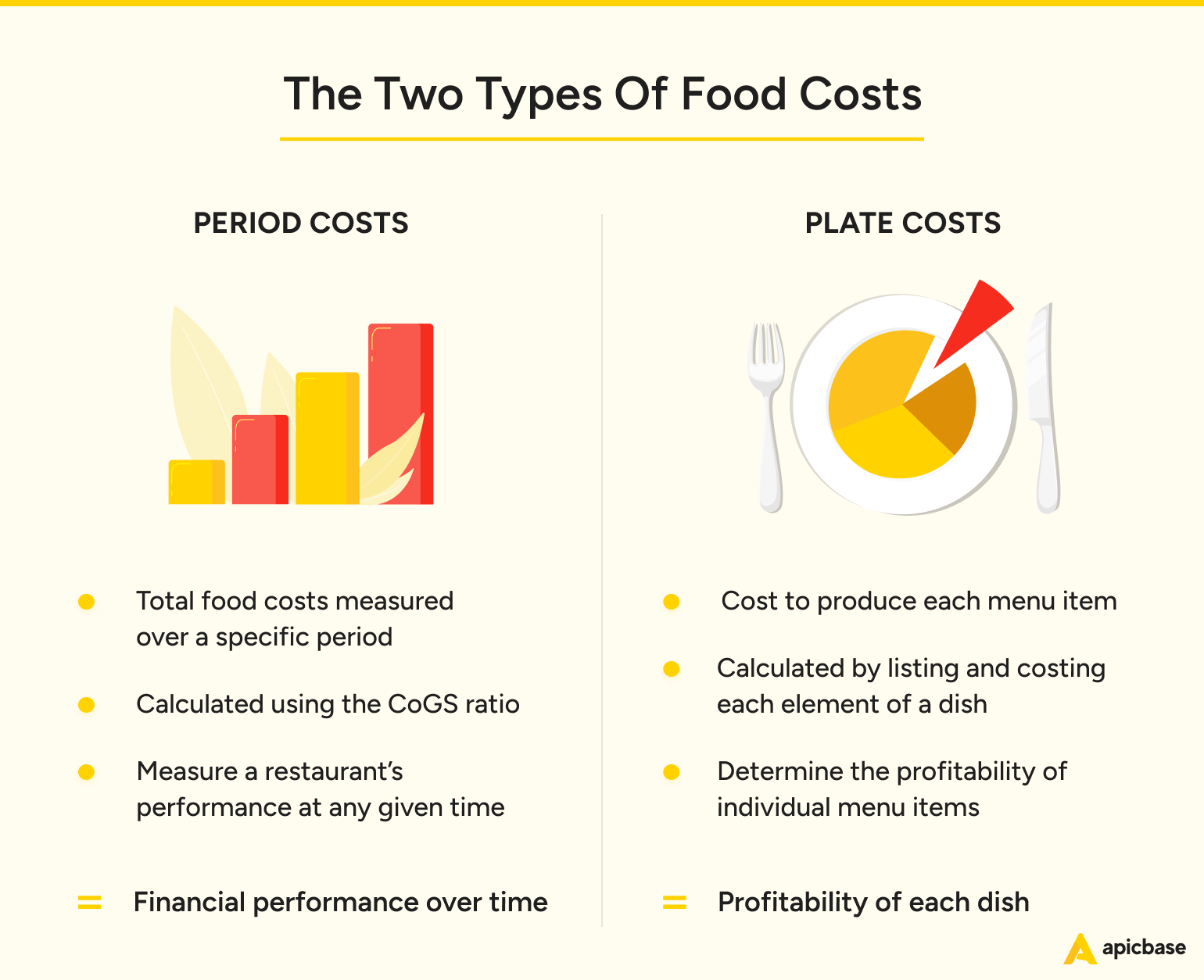
Period costs are a restaurant’s total food costs measured over a specific period, like a fortnight, month, or year. Food costs over a period of time are calculated using the CoGS ratio, which measures the total cost of producing the items sold in that period.
Plate costs tell you how much it costs to produce each menu item. This is calculated by carefully listing out and costing each element of a dish to see how much it costs to produce.
Period costs give a measure of a restaurant’s performance at any given time, while plate costs are used to determine the profitability of menu items. When you monitor these metrics closely, you can spot anomalies and use menu engineering to improve profit margins on each dish sold.
How do you calculate food costs?
Calculating food costs is the first step towards reducing them. Once you know what you’re spending, you can start to see where you can make reductions.
There are four fundamental calculations to understand to stay on top of food costs.
- Actual food cost – A restaurant’s actual food cost is the value of stock used over a given period. Or the decrease in total inventory value. In other words, it tracks what you spend to produce food over that time.

- Food cost percentage – This compares your actual food cost to your revenue for the same period to give a percentage. The actual food cost percentage tells you how much you’re spending compared to what you’re taking in.

- Ideal food cost – Your ideal food cost is what it would cost to produce food in a perfect world, with no wastage, theft, or spoilage. Ideal food cost is calculated by costing each recipe to determine the cost to produce each portion, then dividing it by the number of times each item was sold (your sales mix). The ideal food cost is a benchmark for the actual food cost.

- Food cost variance – The food cost variance is the difference between your actual food cost and your ideal food cost. The aim is to be as close to zero as possible, but realistically, a single-digit variance indicates a healthy business.
How to reduce food costs
You’ll need to track key metrics, control spending, and optimise your portioning and menus to reduce food costs and boost margins without sacrificing quality. Combine these critical factors, and you’ll have the recipe for better profitability.
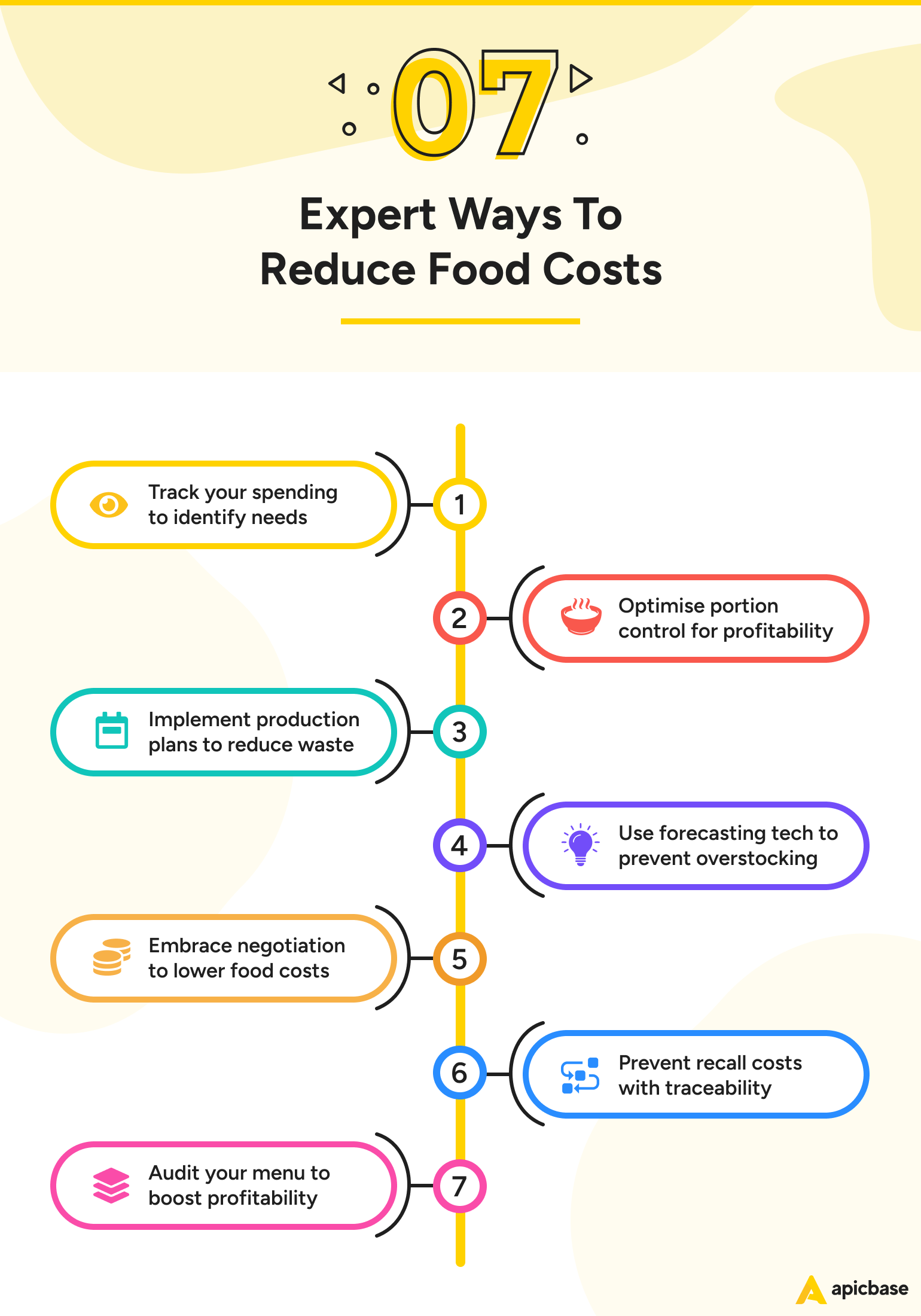
1. Track your spending
When you carefully track your spending, you can see precisely what is needed and where to reduce costs without impacting quality. You can also look for better deals, renegotiate with suppliers for better prices, and potentially reduce costs for the same or equivalent ingredients.
Traditionally, restaurant owners had to sift through invoices from multiple suppliers in an attempt to extract insights manually. Today, digital tools that store your financial transactions make tracking your spending easier and more impactful.
Restaurant procurement and accounting software stores all your supplier information so you can look back at past spending trends and quickly contact suppliers when required. The best systems synchronise your POS, accounting, and inventory data and display the information you need in clear dashboards.
A system like Apicbase allows finance managers to easily track spending, access detailed reports, and compare costs across locations with just a few clicks. This helps them get a real-time overview and never let spending spiral out of control.
2. Optimise portion control
Proper portion control is essential to controlling costs and maximising profits. When portions are too large, margins go out the window, and more food goes in the bin, wasting ingredients and money.
But if your portions are too small, customers may be dissatisfied and feel they haven’t received value for their money.
The sweet spot leaves the customer happy and also encourages them to order sides and desserts rather than splitting a main.
Accurate recipe costing is the key to controlling portions and food costs. With detailed recipes and production plans, you can ensure consistent portions and that your recipes produce profitable plates when executed correctly.
Staff training, especially for new recruits, is essential to ensure your teams prepare recipes accurately. Stress the importance of portion control and make sure each team member knows where to find recipes and how to implement them correctly.
Digital recipe costing tools store all your recipe data in a consistent format and can even produce production plans to make it easy for your kitchen teams to produce quality food at the right portion size. This is the only way to know how much your dishes actually cost and ensure you’re not throwing money away by making portions too large or too small.
3. Implement production plans
Advance planning maintains consistency and reduces waste. Detailed production plans take into account predicted demand and produce a list of production tasks and the appropriate mise en place needed for the shift.
A digital system that considers all the production tasks for a given day can make your production schedule far more efficient. For example, it can plan to produce tomato sauce in batches for use in multiple dishes. The kitchen team makes one large batch rather than preparing a sauce multiple times, saving time and reducing food costs.
Planning ahead also helps you reduce waste by using every part of your ingredients. You can turn vegetable trimmings into soups, mince meat offcuts for burgers, and plan to use any leftover food for staff meals.
The best production plans keep the kitchen team working in sync towards the same goal and improve consistency and portion control during a busy service.
4. Prioritise forecasting
If you could predict the future, you’d be able to order exactly what you need and no more. Restaurant demand forecasting software is getting sophisticated enough to accurately forecast how busy you will be and even which dishes are more likely to be popular on a given day.
With accurate forecasting, you can prevent overstocking and overproduction, reducing spending and waste – while avoiding under-purchasing, running out of popular items, and disappointing customers.
Today’s most sophisticated forecasting tools combine your past sales data, current inventory levels, and business intelligence tools with the latest AI tech to accurately predict the demand for each menu item. They generate purchase orders automatically based on the predictions and even produce production plans to keep prep at the optimum level at every location.
5. Embrace negotiation
It’s important to have strong relationships with your suppliers. But equally, if the prices aren’t right, this issue must be dealt with. The more you can communicate, the better. And the more visibility you have over your costs over time, the more likely you are to spot opportunities to negotiate better prices.
Procurement software keeps all your supplier information and pricing in a digital system. You can see past invoices and pricing trends, and get in touch from one place. This makes it far easier to start up a conversation about reducing prices.
It can help you spot opportunities to get discounts on larger orders, for example, or renegotiate pricing if you notice a sudden spike. Better procurement management through digital tools has the potential to lower food costs without changing the quality or quantity of ingredients you use.
6. Prevent recall-related costs
Product recalls are among the most costly disasters for restaurants and food service businesses. Not only do they damage your reputation, leading to future loss of sales, but you’ll use a ton of money and resources to clean up the mess.
The bigger players in the industry often demand that their food service partners have robust traceability processes in place.
Prevention is the best form of protection against the risk of a product recall. While you can’t eliminate the risk entirely, having the clearest visibility throughout your supply chain is the best way to prevent recalls and protect yourself should they occur.
Food traceability software tracks your ingredients throughout the supply chain and allows you to quickly identify which ingredients went into a specific batch in case of a problem.
7. Audit your menu
Monitoring the performance of dishes over time tells you how profitable each item is. By comparing the popularity of dishes with the amount it costs to produce them, you know your best performers and where you can drop dishes to cut spending.
Ongoing menu auditing lets you keep your menu lean and focused, offering only the most popular dishes with the best margins.
Restaurant management software, like Apicbase, can access your sales, inventory, and recipe data to calculate your CoGs for each item and compare them to your sales mix. This lets you see which items are the most popular and profitable and which underperforming items cost the most to produce.
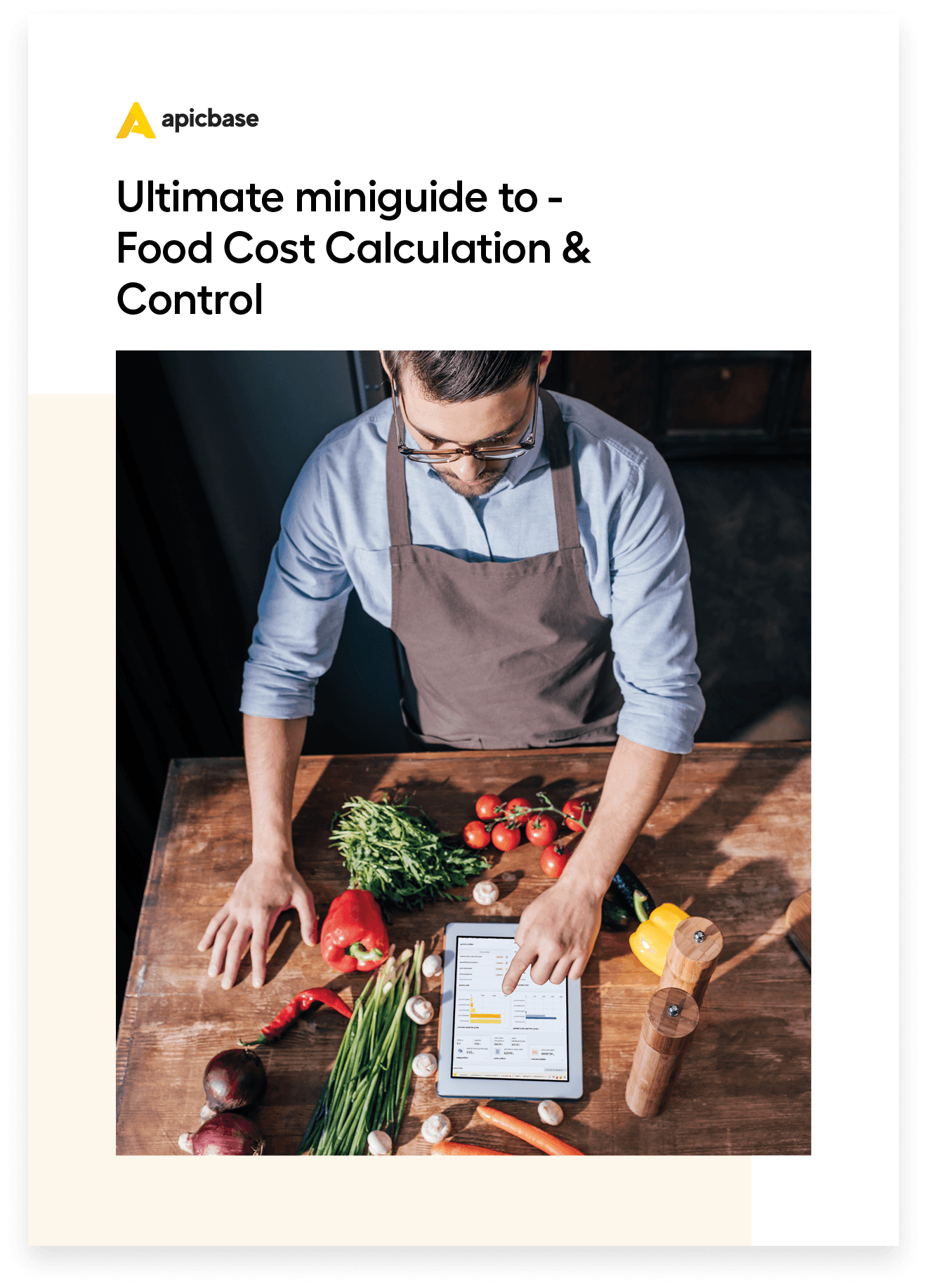
Calculate & Control the Ideal Food Cost
Discover how to calculate and control the ideal & actual food cost to develop profitable menus.
Simplify food cost control with a unified digital system

Are you looking to cut food costs without compromising quality or customer experience? Monitoring spending, accurately costing recipes, and managing kitchen operations with detailed production plans are essential.
Apicbase helps you do just that. It stores your recipe data and provides real-time insights into your spending patterns. The system creates precise production plans to control kitchen output and assists in managing inventory and purchasing.
In summary, Apicbase processes all your restaurant data to make food cost control straightforward and efficient.
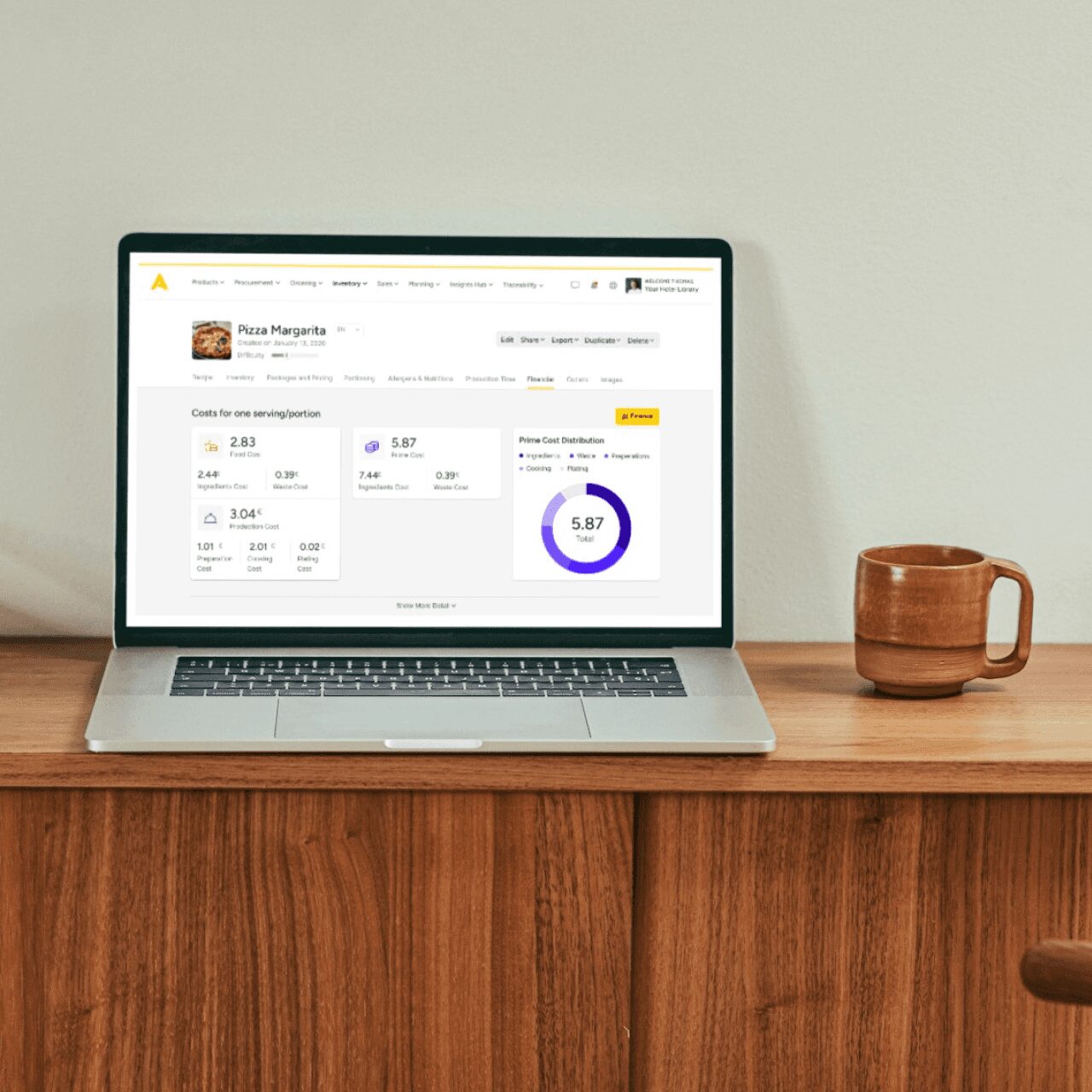
Cut food costs with Apicbase
Learn everything about restaurant inventory management software. 👇


